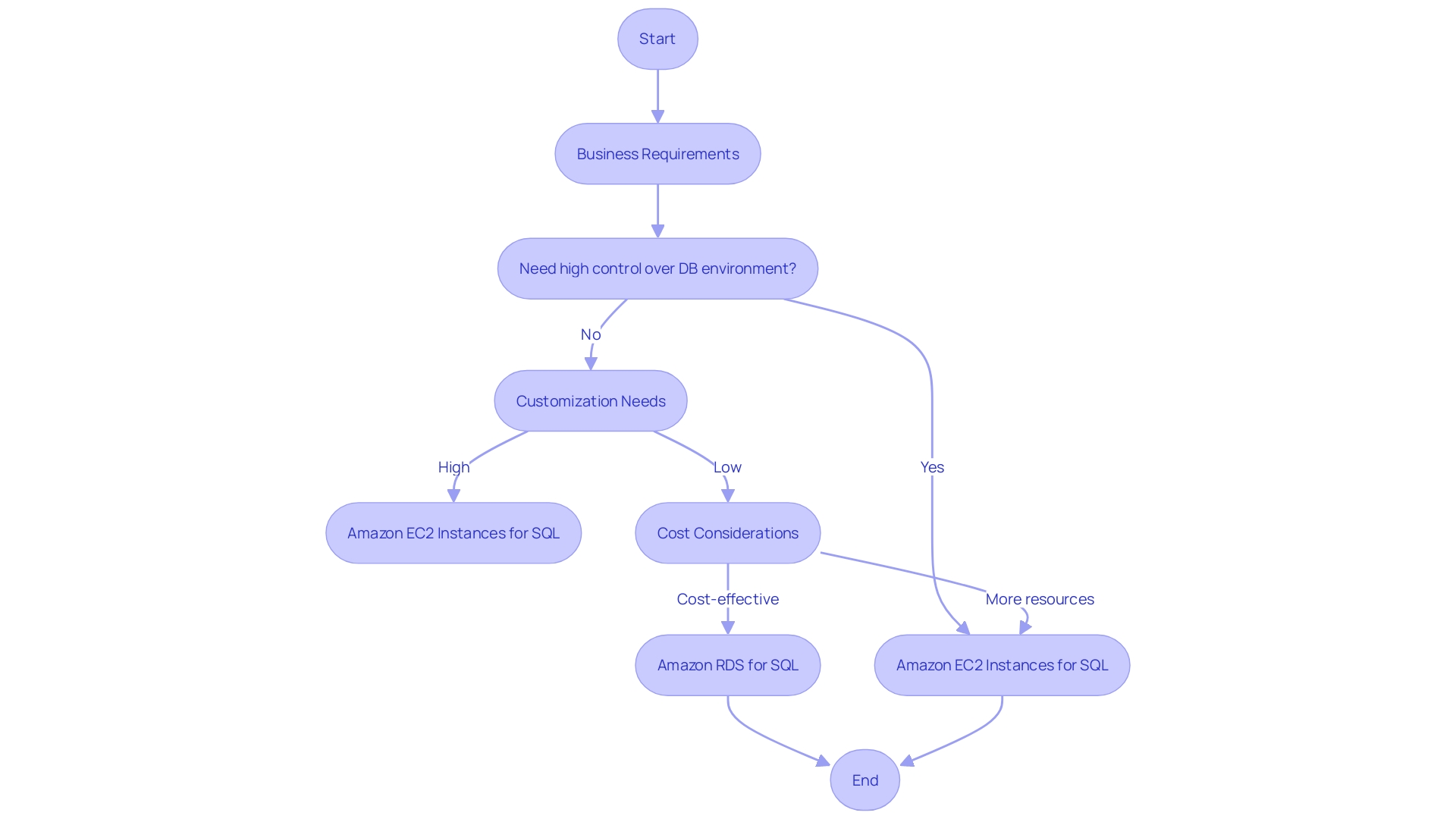Introduction
Cloud computing has revolutionized the way organizations deploy and manage their SQL Server environments. With the rise of platforms like Azure and AWS, businesses now have a wide range of options to choose from. However, understanding the pricing models and capabilities of these platforms is crucial for making cost-effective and strategic decisions.
In this article, we will explore the pricing models of Azure and AWS for SQL Server deployments. We will dive into the details of each platform's offerings, including their pay-as-you-go models, reserved instances, and spot instances. Additionally, we will examine how Azure has enhanced its affordability through a new pricing structure and how AWS has introduced a more favorable storage pricing model.
Furthermore, we will discuss the key considerations organizations should keep in mind when choosing between Azure and AWS for SQL Server deployments. This includes evaluating performance capabilities, licensing costs, hybrid and multi-cloud strategies, and the overall fit with the organization's needs and goals.
By the end of this article, readers will have a comprehensive understanding of the pricing options, licensing considerations, and strategic factors that play a role in selecting the right cloud platform for their SQL Server deployments. Whether it's optimizing costs, ensuring high performance, or aligning with hybrid or multi-cloud strategies, this article will equip readers with the knowledge they need to make informed decisions in the ever-evolving landscape of cloud computing.
Pricing Models: Azure vs AWS
Comprehending the pricing models of AWS and other cloud services is crucial for cost-effective SQL Server deployments. The pay-as-you-go model's expenses align directly with your usage, providing a transparent and flexible cost structure. AWS, conversely, presents a variety of options including on-demand, reserved instances, and spot instances, each with unique cost implications.
An example is a provider in the sky that collaborated with Insight to strategize on cost, management, and capacity planning. With the objective to open multiple data centers, a flexible and predictable pricing structure was crucial. The solution was an as-a-service offering with a standardized rate card, which allowed for consistent pricing across all locations.
Azure has adapted its model to further enhance affordability. Previously, uncompressed data determined storage costs, leading to high expenses. However, a recent update introduced a physical storage pricing model, where you're billed for compressed data, significantly reducing costs. This new pricing structure is particularly beneficial when managing large datasets that don't require long-term storage in services like BigQuery.
For AI and storage, aligning the proper infrastructure with workloads is crucial. Microsoft's infrastructure, for instance, has evolved to support AI technologies, and companies need purpose-built infrastructure to leverage AI effectively. Moreover, a report by Forrester Consulting and Ipsos indicates that AI implementation is now a priority, with companies focusing on the readiness of AI-powered apps for deployment.
However, accurate cost management remains a challenge across organizations of all sizes. As per a report in 2022, there is a widespread challenge in obtaining transparent visibility into expenses related to cloud computing. This reflects the importance of choosing a pricing model that not only fits the technical requirements but also provides clarity and predictability in expenses.
Hence, while choosing between AWS and another cloud provider for SQL deployments, it is crucial to assess not only the pricing structures but also their compatibility with your organization's strategic objectives, operational effectiveness, and drive for innovation.
Azure SQL Server Pricing Options
When it comes to SQL deployments in the cloud, there are two distinct options available from Azure that cater to different operational needs: SQL Database and SQL Managed Instance. SQL Database represents a fully managed database-as-a-service (DBaaS) solution, designed to relieve the burden of routine database maintenance and performance tuning. On the opposite side, SQL Managed Instance provides comprehensive SQL Server instance management, with the added benefits of built-in high availability and a business model that supports existing SQL Server licenses.
Choosing between these services involves considering several critical factors. Performance levels, storage requirements, and data transfer volumes form the basis of pricing, so it's essential to align these with your workload's needs. In practice, selecting the right service is akin to crafting a custom image for a virtual machine; you don't use a generic definition but rather a specific version tailored to your requirements. This is where comprehending image definitions in the cloud platform becomes relevant—each definition, representing a combination of Publisher, Offer, and SKU, serves as a blueprint for creating customized solutions that meet specific organizational needs.
The commitment of Azure to flexibility extends to how organizations manage their financial and operational investments in the cloud environment. Mark Russinovich, CTO of Microsoft's cloud computing platform, emphasizes the importance of aligning technical support with business objectives, highlighting the continuous evolution of cloud services to enhance reliability and performance of workloads. Utilizing the extensive security expertise of a leading cloud computing platform, which encompasses a large team of security professionals and a significant investment in cybersecurity research and development, businesses can be confident in the strength of their data protection and privacy.
In essence, Azure's SQL services offer not just a choice between two pricing models but also the assurance of scalability, security, and ongoing innovation that are critical in today's fast-paced digital landscape.
AWS SQL Server Pricing Options
In the realm of cloud computing, AWS provides a variety of deployment options for SQL, which can be instrumental in addressing different business requirements. Amazon RDS for SQL is a fully managed database service that simplifies the setup, operation, and scaling of SQL deployments. It offers automatic software patching, backups, and built-in high availability, making it an efficient choice for organizations that prefer to focus on their applications rather than on infrastructure management.
Alternatively, Amazon EC2 instances for SQL enable organizations to operate SQL on virtual machines in the virtual environment. This option provides greater control over the database environment, including the operating system, the database, and the instance itself. It is particularly suited to scenarios that require extensive customizations or specific configurations not supported by RDS.
The cost of these services is influenced by a myriad of factors like the selected instance type, allocated storage, and the volume of data transferred. For instance, higher performance instance types or provisioned IOPS (input/output operations per second) can increase costs, but they may be necessary for high-throughput applications.
As companies navigate their strategy, they must consider the implications of their architecture decisions. A monolithic architecture might be suitable for applications with tightly coupled components, while a microservices architecture could benefit those seeking scalability and independent service deployment. These architectural considerations, along with the operational aspects of SQL deployment, are crucial in ensuring an optimized balance between performance, cost, and maintainability in the cloud-based environment.

Cost Comparison: Azure SQL vs AWS RDS
Choosing the most economical platform for SQL deployments necessitates a nuanced comprehension of the pricing structures of AWS and the cloud provider. Both cloud providers offer a range of options that cater to different use cases and budgets, with costs varying by region, instance type, and usage patterns. For organizations seeking to enhance their SQL deployments, Microsoft's cloud platform presents a feasible option with its Azure Virtual Machines. These provide a simple transition experience, potential savings, and a familiar setting for those already familiar with SQL. Furthermore, Insider Studios, in collaboration with Microsoft and Intel, highlights the comprehensive benefits and the transformative potential of leveraging SQL on Azure Virtual Machines.
On the AWS side, customers have reported a shift to a more favorable storage pricing model post-October 2022, wherein they are billed for the compressed data rather than uncompressed, effectively reducing the storage costs. This change is particularly beneficial for companies seeking to manage large datasets cost-effectively.
When considering additional services that support SQL Server deployments, such as backup, monitoring, and scalability, the cost implications can be significant. Organizations are advised to conduct a thorough cost analysis that includes these ancillary services to fully appreciate the financial impact. Notably, for multi-provider strategies, careful planning is required to manage the higher egress costs associated with data movement between cloud vendors, which can be up to five times more expensive than intra-cloud regional transfers.
Statistics reinforce the growing reliance on cloud technologies, with an estimated 94 percent of organizations utilizing cloud services and approximately 75 percent intending to invest in cloud platforms for innovation. With such a high rate of adoption, the significance of strategically selecting and managing resources becomes paramount for modern enterprises. Whether the objective is to attain cost savings through real-time price benefits across multiple cloud platforms or to guarantee high availability for important applications, the decision between Microsoft's cloud computing service and Amazon Web Services (AWS) for SQL deployments should be based on a thorough assessment of the offerings and pricing models provided by each platform.
Licensing Costs and Considerations
Understanding the pricing complexities of SQL requires a strategic knowledge of licensing options offered by cloud service providers such as AWS and other providers. Azure offers organizations the flexibility to leverage their own licenses through the BYOL model or to take advantage of the Azure Hybrid Benefit for potential cost savings. This is especially advantageous when deploying services that depend heavily on SQL, where licensing fees can become a significant expense. AWS also offers a Bring-Your-Own-License option, as well as a License Included model, which can simplify procurement for businesses by bundling the cost of the SQL database license with the service usage fees.
For organizations managing large-scale SQL databases, the decision between licensing options provided by AWS and Microsoft's cloud platform should be based on existing agreements and the specific needs of their SQL database workloads. This decision can impact the overall efficiency and cost-effectiveness of operations, especially when considering the technical nuances of database management, such as the handling of foreign keys and constraints in a distributed environment or the challenge of maintaining ACID properties across horizontally scaled database nodes.
Given the intricacies of database sharding and the coordination required to maintain data integrity across different shards, selecting the right licensing model is not just a financial decision but a strategic one that can influence the technical approach to deploying and scaling SQL databases. Therefore, a comprehensive assessment of present and future requirements, in collaboration with financial considerations, should steer the decision-making process to guarantee that organizations select the most favorable licensing structure for their SQL Server deployments on AWS.

Hybrid and Multi-Cloud Strategies
When assessing services for hybrid and multi-cloud strategies, the integration with existing on-premises infrastructure is crucial. 'The offerings from Microsoft's cloud platform, such as Azure Hybrid Benefit and Azure Arc, provide a cohesive experience by allowing seamless integration with on-premises systems.'. For example, Azure Arc allows centralized management across environments, which was a crucial factor for the World Bank, who implemented Azure Arc to manage their SQL Server investments and achieve a unified management experience across various providers, including AWS.
Similarly, AWS facilitates hybrid operations through AWS Outposts, which brings AWS services, infrastructure, and operating models to virtually any data center, co-location space, or on-premises facility. Moreover, AWS Hybrid Architecture supports a consistent hybrid experience. However, according to advice from experts in the industry, when adopting technologies hosted in the cloud, the total cost of ownership and return on investment should be calculated over a long term, such as five years, to understand the full benefits.
Organizations must carefully analyze their unique requirements for hybrid or multi-cloud deployments. The key lies in selecting a provider that not only aligns with their current infrastructure but also supports their strategic vision. For instance, OneAstec's effort to consolidate their business model necessitated a single source of truth for data across 17 subsidiaries, which was enabled by the implementation of a suitable online platform that offered consistency, control, and informed decision-making capabilities. This highlights the significance of choosing a solution that can efficiently merge different systems and optimize processes, ultimately enhancing operational and financial performance.
In summary, the appropriate provider for hybrid and multi-cloud strategies is one that provides the required tools and services to integrate with on-premises systems while also aligning with the company's long-term financial and operational objectives. Organizations should take into account the expertise of advisors such as Canalys and PwC to navigate the intricate landscape of cloud environments and ensure the success of their adoption journey.
Performance Comparison: Azure SQL vs AWS RDS
Choosing the appropriate cloud provider for SQL deployments necessitates careful evaluation of their individual capabilities to handle performance-intensive tasks. Azure SQL and AWS RDS both stand out for their high-performance solutions, but they vary in instance types, storage configurations, and network capabilities. These elements significantly impact the performance outcomes of SQL operations. To make an informed decision, organizations must diligently evaluate their specific workloads against the performance metrics offered by each cloud provider. This approach ensures that the chosen provider aligns with the organization's performance expectations and requirements.

Choosing the Right Cloud Platform: Key Considerations
Deciding between AWS and Azure for SQL deployments demands a nuanced comprehension of each platform's capabilities and how they align with an organization's particular requirements. While both platforms offer a strong environment for SQL, it's crucial to consider the pricing, including not only the licensing costs but also the operational costs associated with different pricing models and options. A comprehensive cost comparison should be made, taking into account both immediate expenditures and long-term financial implications.
Efficiency and speed of SQL operations on each platform need to be evaluated as another crucial factor in performance. It's crucial to acknowledge the potential resource-intensive nature of certain SQL operations, like the utilization of cursors, and how each provider's technology stack can either worsen or alleviate these performance hits. Drawing insights from real-world experiences, such as those shared by developers on platforms like Stack Overflow, can reveal the practical challenges and solutions when deploying SQL Server in a remote computing environment.
Moreover, the strategic choice between a monolithic architecture and a microservices-based approach can significantly affect the deployment's success. Organizations must weigh the resilience, availability, and scalability offered by each platform, ensuring these align with the desired architectural model.
As computing technology advances, regional regulations like GDPR complicate the responsibilities of both providers and users, making security a top priority. Organizations must consider the platform's compliance capabilities and support structure to safeguard their data effectively.
Lastly, the decision to adopt a hybrid or multi-cloud strategy should be made with caution. As noted in recent industry reports, such strategies are not universally beneficial and require careful consideration of the organization's readiness and the potential impact on database management.
To summarize, when choosing the appropriate platform for SQL Server deployments, it is crucial to thoroughly evaluate pricing, performance, architecture, security, and strategic fit. By addressing these considerations with a clear understanding of each cloud provider's strengths and limitations, organizations can make informed choices that support their operational objectives and technological vision.
Conclusion
In conclusion, understanding the pricing models of Azure and AWS is crucial for cost-effective SQL Server deployments in the cloud. Azure offers a pay-as-you-go model, while AWS provides options like on-demand, reserved instances, and spot instances. Azure has enhanced affordability through a new pricing structure for compressed data storage, and AWS has introduced a more favorable storage pricing model.
When choosing between Azure and AWS, organizations should consider performance capabilities, licensing costs, hybrid and multi-cloud strategies, and overall fit with their needs and goals. Evaluating performance levels, storage requirements, and data transfer volumes is essential.
Licensing costs and considerations are important factors to consider. Azure offers flexibility through the BYOL model and the Azure Hybrid Benefit. AWS provides a BYOL option and a License Included model.
For hybrid and multi-cloud strategies, Azure offers seamless integration through Azure Hybrid Benefit and Azure Arc. AWS facilitates hybrid operations through AWS Outposts and AWS Hybrid Architecture.
Performance is critical, and organizations should evaluate the capabilities of Azure SQL and AWS RDS. Understanding performance metrics and evaluating specific workloads is essential.
Choosing the right cloud platform for SQL Server deployments requires a comprehensive understanding of pricing, performance, architecture, security, and strategic fit. By considering these factors and evaluating the strengths and limitations of each cloud provider, organizations can make informed decisions that support their operational objectives and technological vision.




